Carpenter ants don’t cause as much damage as termites and other pests, but they can be quite problematic. They usually leave ashes of wood lying on the floor and even might bite you when you accidentally get close to them. Carpenter ants damage arises from their need to create nests in wooden items like desks and stumps. If your house is infested, then this piece will be of great help to you.
In this article, I intend to teach you how to get rid of carpenter ants in house and walls and what carpenter ant treatments to use in each case. Below, I cover some ways of preventing, identifying these insects, and ensuring they won’t disturb you anymore.
[wpsm_titlebox title=”How to Get Rid of Carpenter Ants” style=”main”]
- Find a colony and place bait both indoors and outdoors.
- Find the main carpenter ant colony and spray.
- Use insecticides or natural remedies.
- To prevent carpenter ants, disinfect your home all the time, eliminate moisture problems, and get rid of stumps that are near your home.
[/wpsm_titlebox]
What Do Carpenter Ants Look Like?

There are thousands of ant species in the world, but fortunately, not many of them attack homes. You might not be able to tell which type of ant is currently bothering you, and that can make it hard to remove these insects. Carpenter ants are easy to identify since they are the biggest household ants. Their lengths are between six to twelve millimeters.
Another way of differentiating carpenter ants from the others is by checking their waists. They have one node at the waist, while most other species have two. Carpenter ants also have rounded thoraxes, while other insects have unevenly shaped thoraxes.
The colors can be black or reddish of all or most of their bodies. Try to check for all these characteristics to ensure that you are not confusing a different type for these pests.
Carpenter ants do not typically fly, but you may occasionally spot one flying. Flying species arise in ant colonies that have matured, and they end up growing new colonies in other locations. A flying male carpenter ant will usually die after mating with a female, and after that, the female will become the queen of the nest.
Although certain carpenter ants have wings, you can distinguish them from termites. For one, the ants are larger than termites. These insects also have yellowish wings, while termites have white ones. The waists of ants and termites are also easy to spot since ants have distinctive waists that separate the abdomen and thorax.
Do Carpenter Ants Bite?
Carpenter ants can bite humans under certain circumstances, and it is important to learn about these possible situations to stay safe. Overall, these ants are not dangerous in the sense that they do not spread any diseases to human beings.
The one situation when carpenter ants can bite is when they feel that their nests are threatened. Just like bees, they will act in self-defense when threatened. If you try to kill them with a shoe or other object and end up missing, you may suffer some bites.
Also, if you get too close to the ants or their nests, they will bite you. You should note that these insects can also attack pets. However, you can learn how to get rid of carpenter ants in walls without getting bitten. You can contact pest removal services since they are trained to avoid attacks or perform the useful tips below by yourself.
I want to warn you that you can get attacked by large numbers of carpenter ants if you don’t know how to kill carpenter ants in house.
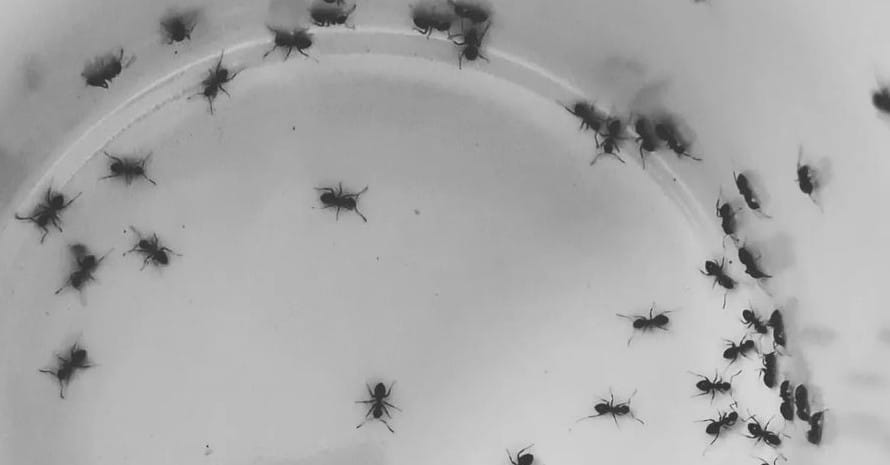
Carpenter bites are not very serious from a medical perspective. They will give you the sensation of a pinch and may lead to the drawing of small drops of blood. Afterward, you may get a small swelling and experience an itching sensation.
The ants are not venomous, but they leave some formic acid in the skin. This is typically not harmful to humans, but it can occasionally lead to the development of allergic reactions. If you experience such reactions, make sure to visit a doctor.
It is worth noting that you can live with carpenter ants for a long time without getting bitten, but it is advisable to get rid of these insects in case of infestation. The main thing is that you need to learn is how to control these species in your house.
What Causes Carpenter Ants and What Are Notable Carpenter Ants Damages?
All the times when I have encountered carpenter ants in a person’s home or office, it was in damp places that have aging wood. Carpenter ants usually feed on proteins and sugars that are lying in the house. These include meats, pet food, syrup, honey, jelly, and granulated seeds.
Therefore, you should keep your house clean to ensure that they are not attracted to pieces of food. These insects do not always create their nests in rooms that are next to their sources of food. This means you should not ignore the cleaning of all the rooms.
Contrary to popular opinion, carpenter ants do not eat wood and are not nearly as damaging as termites. They drill holes in furniture to make their nests. The extent of the damage caused by these insects will depend on the colony’s size and the period of staying in the property.
That is why it is advisable to get rid of them as soon as you spot them. Also, it is important to take steps to prevent the growth of their colonies since, at some point, they can be hard to eliminate.

How Do You Know if You Have Carpenter Ants?
If you spot some insects walking around your house, you may suspect you have carpenter ants. The chances of the ants being carpenter ants are higher if you live on the eastern side of the US or the southeastern side of Canada.
As all experienced professionals in the field know, carpenter ants are a lot more prevalent in these places. In this section, I will look at some signs of carpenter ants in house.
One sign that the insects crawling in your house are the carpenter ants is the appearance of wood shavings next to wooden items. As I have mentioned above, these ants do not eat wood but drill holes to make their dwellings instead.
If you see ants crawling in and out of crevices in your house, you can also conclude that you have a carpenter ant problem. The entrances to these holes are usually circular, and the insides will appear smooth.
You can also identify these ants by their faint rustling sounds, but that can be a bit challenging. I recommend checking the appearances of the ants to determine whether they match the descriptions I have offered above.
You should not ignore a case just because you have only seen a single carpenter ant. Over time, the colony will grow, and it will be a lot more difficult to control. Also, these ants do not usually go to search for food in groups. They send scout ants to find something to eat. Thus, they will only mobilize and travel as a group when they finally locate food.
Carpenter Ants: How to Get Rid Of?
I have dealt with pests on many occasions, both directly and indirectly. This experience has allowed me to learn the best ways of getting rid of carpenter ants in different environments. In this section, I will show you how to eradicate carpenter ants.
Top Pick Against Carpenter Ants
[amazon box=”B00461HCLO” template=”vertical” tracking_id=”how-to-get-rid-of-carpenter-ants-20″ button_text=”Check price on Amazon” button_detail=”https://shareasale.com/r.cfm?b=410159&u=2583381&m=43235&urllink=www%2Edomyown%2Ecom%2Fadvance%2Dcarpenter%2Dant%2Dbait%2Dp%2D173%2Ehtml&afftrack=how%20to%20get%20rid%20of%20carpenter%20ants” button_detail_text=”Check price on DoMyOwn”]
Specifications:
- Active Ingredient: Abamectin B1 0.011%
- Item Weight: 0.7 Pounds
- Liquid Volume: 8 Fluid Ounces
- Item Dimensions LxWxH: 3.8 x 4 x 7 inches
- Target Species: Ant
Using Indoor and Outdoor Baiting
In my opinion, baiting is the most effective way of ant carpenter killing. Baiting can either be indoor or outdoor, although it would be better to combine these two methods.
For using baiting, you will need to identify an outside colony and an indoor colony. Usually, the indoor colony serves as the satellite one, and the outdoor group is the main colony. The ants will usually leave the main colony to go and search for food around the satellite one.
In this way, they will create a trail between the main and satellite colonies. The outdoor baiting method will exploit this trail to get rid of all the carpenter ants in both groups. The poison should be applied along the trails so that the ants pick it up as they move between the two colonies. You can apply the poison around the house, trees, stumps, and other places where carpenter ants appear to have set up a nest.
Indoor baiting is applied around cracks and crevices in your house where the carpenter ants are seen entering the structure. This form of baiting can especially help to prevent re-infestation in the future. You can reapply the poison regularly if you have a recurring ant problem.
I have seen many people making the mistake of using poisons that are old and mild. Carpenter ants will not fall for such baits. Such treatment usually spoils in a week and has to be replaced regularly. Similarly, if you leave food particles around the house, the carpenter ants will not fall for the indoor baiting. They will carry real foods instead.
It can be hard to determine where to place the baiting and which places to leave out. My advice to people with the ant problem is to apply the poison in as many places as possible. You should spread it in all places, which seem conducive to carpenter ants.
Make sure to check out my review of the best carpenter ant killers available on the market.
Using Sprays
Some people also use sprays for carpenter ant control. For this method, you will have to locate the main colony of the carpenter ants, where the queen lives. Once you find the settlement, you will need to spray around it and along the trail of the ants.
I have seen many people going for repellent sprays in an attempt to get rid of carpenter ants inside the house. However, you should never use such sprays inside the house. This is because they will drive the ants away and will not have a major impact on the colony as a whole. Thus, you will only manage to kill a few exposed ants.
With repellent sprays, the carpenter ants will also detect that they are under attack. What usually happens in such cases is that the queen will instruct the ants to take the eggs and split as they create multiple satellite colonies. Their goal is to survive as a whole, even if some members will die.
This means that the repellent sprays will only worsen the problem as the ants become more spread out. Moreover, the queen will be prompted to breed faster to increase the chances of survival of the ants.
There are only a few ant sprays that can qualify to be non-repellent, and that is why I do not recommend the use of sprays to get rid of carpenter ants. It is also important to check whether the sprays are meant for indoor or outdoor use.
Using Insecticides
Insecticides are among the best methods of carpenter ant killing. These chemicals usually come with dangerous-sounding ingredients, but most of them are perfectly safe for household use. Some of the common ingredients used include DOT, abamectin, fipronil, and chlorfenapyr.
The only chemical on this list, which can be dangerous for humans and pets, is fipronil. Abamectin can also be toxic, but it is used in very low concentrations in carpenter ant insecticides, meaning it can’t cause any harm to humans and pets.
Insecticides can be in the form of sprays, mists, or foams. They are meant to be applied around the nests of the ants or along their trails. Some of these insecticides will even seep into the wood and discourage the ants from returning in the future.
Using Natural Remedies
If you have ever used natural remedies, you will agree with me that these are the least effective carpenter ant controls. The ants will take a long time before they disappear, so you will need to be patient. Also, there are high chances that they will not entirely disappear.
Boric acid is probably the most used natural carpenter ant treatment. But you can’t just use boric acid on its own as you should mix it with a tasty bait like sugar or honey. This acid poisons ants and damages their nervous and digestive systems.
The goal here is to make the worker ants take the bait back to their nests so that they poison the whole colony. I recommend placing the mixed bait in different parts of the house to make sure the carpenter ants pick them up.
Many people fail to understand that boric acid can still be dangerous to human beings. If you have children or pets in the house, you should avoid this bait.
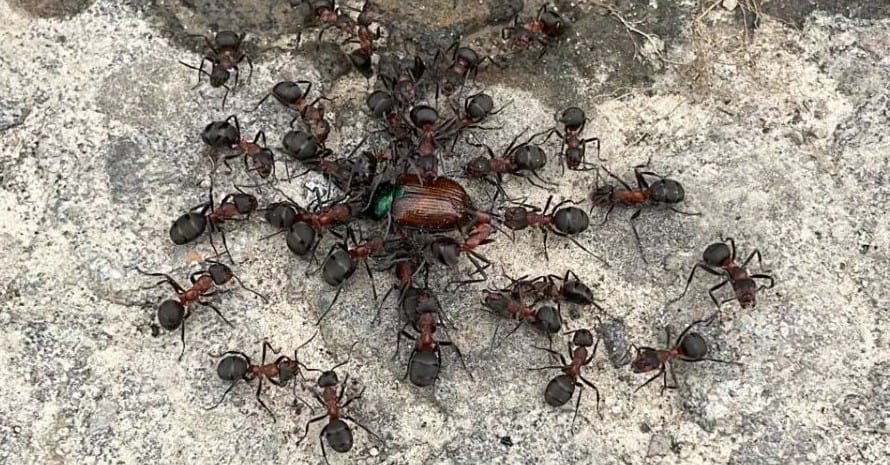
An alternative option that is safer for human beings and pets is the food-grade diatomaceous earth. This is a natural powder, which will make carpenter ants dehydrated, and they will end up dying. This remedy is only dangerous to humans and pets if it is sniffed in large amounts.
I have never seen this happening, and I don’t think that such a risk is real. However, if you choose to use this remedy, make sure to be careful and go for the food-grade version and not the pool-grade one.
Before you use any carpenter ant extermination method, you should try to identify the location of the carpenter ant colony. You can spot the worker ants carrying food back into their colonies by placing baits as close as possible to the entrances of the nests.
The Best Ways of Getting Rid of Carpenter Ants in House and Walls
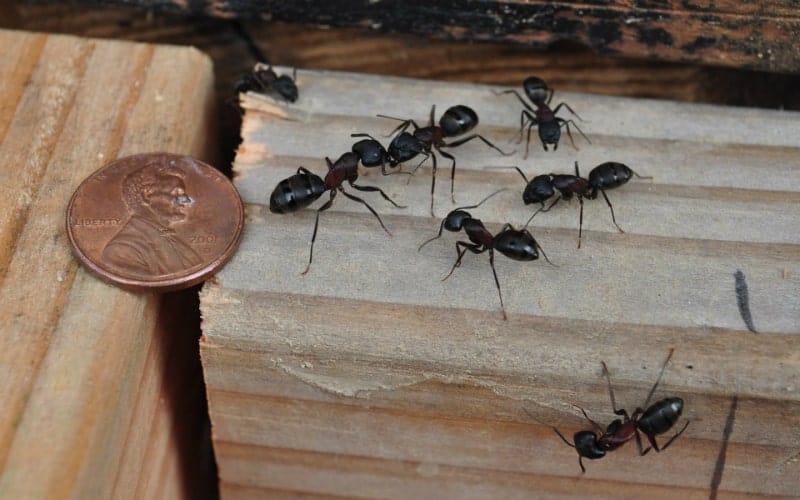
Now that you know the different pest control methods for carpenter ants, you are probably wondering, how do you get rid of carpenter ants in walls and around the house?
- In walls
The best way of getting rid of carpenter ants in the wall is by placing baits such as the ones from Terro. This method will not just kill the ant workers but will get rid of all the ants in the nest, including the queen. This is because all the members of the nest feed on the items gathered by the ant workers. Also, the baits are usually made with the ants’ favorite foods, meaning they will naturally be attracted to the treatment.
- In house
Getting rid of carpenter ants in the house will require a combination of different methods. You will need to use indoor and outdoor baiting since the main nest is usually located outside the house.
Once the indoor nests are eliminated, you can use insecticides and repellant sprays to keep carpenter ants outside the house. You can spray these chemicals along the perimeter of your house and around cracks and crevices.

How to Prevent Carpenter Ants?
Carpenter ants typically appear in the warmer seasons, so you should be the most attentive in those months. If you don’t want to bother yourself with methods of how to treat carpenter ants, you can take some actions to prevent them. Here are the methods you can use to prevent the emergence of carpenter ant colonies in your house:
- Sanitize the house all the time
From my experience, carpenter ants don’t target houses that are clean and well-sanitized. They usually make nests in places with sources of food. If you leave pieces of food lying around your kitchen and living room, they will find places to build nests close to them and always be around to grab some food. Therefore, keeping your house in poor condition can also hurt your future efforts of getting rid of carpenter ants.
- Correct moisture issues
Carpenter ants are attracted to moist environments, so you should make a point of fixing your plumbing, roof leaks, and other moisture problems. Leaks outside your house should also be addressed since they will lead the ants into your place. If you have any moisture-damaged wood outside your house, make sure to get rid of it as soon as possible.
- Get rid of stumps that are located next to your house
These stumps serve as a bridge to your house, and they also offer carpenter ants locations for their main nests. Any tree branches that touch the exterior of your house should also be trimmed.
Also read:
Final Thoughts of Getting Rid of Carpenter Ants
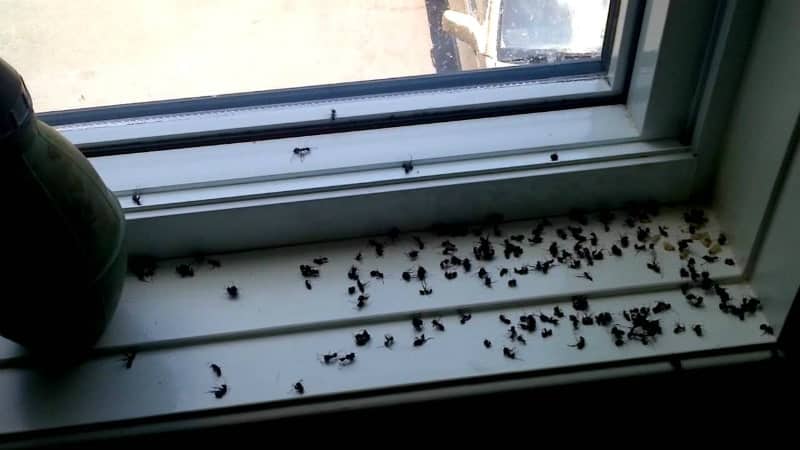
With this information, you should never suffer a carpenter ant infestation again. I have to mention that I strongly support baiting as the best way to get rid of carpenter ants. Ideally, you should combine indoor and outdoor baiting to get the maximum result in the shortest time.
Spraying can end up making it harder to get rid of the ants since they may get an incentive to grow their populations even faster. Moreover, carpenter ants can also spread out to different nests, making it harder to track them and get rid of these species.
Natural remedies are used in many households, but they work very slowly. It can even be hard to tell whether or not the problem is being solved.
I hope that my recommendations helped you to identify if you have carpenter ants in your house and what are the possible ways of removing them from your place.
How do you eradicate carpenter ants in your own house? Have you ever tried any of the methods mentioned in this guide? If so, please tell me about your experience and anything you may have learned in the process.
References:
- How to Identify Carpenter Ants (Scott McCombe) WikiNow:
https://www.wikihow.com/Identify-Carpenter-Ants - Carpenter ants (University of Minnesota Extension):
https://extension.umn.edu/insects-infest-homes/carpenter-ants - Carpenter Ants (National Pesticide Information Center):
http://npic.orst.edu/pest/carpenterant.html

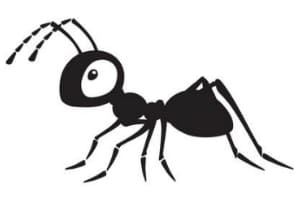
Comments are closed.